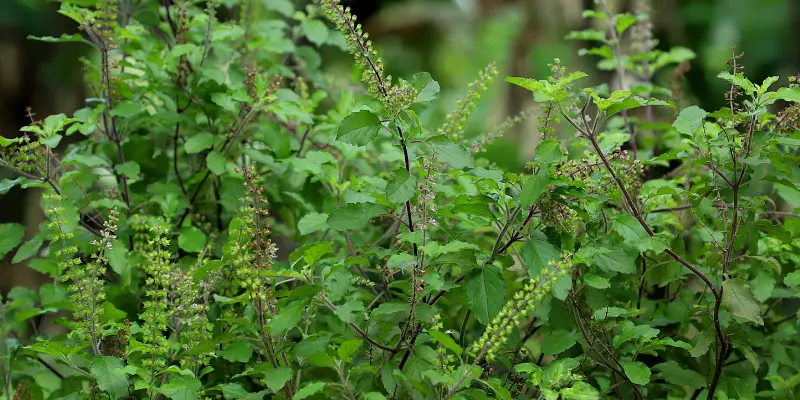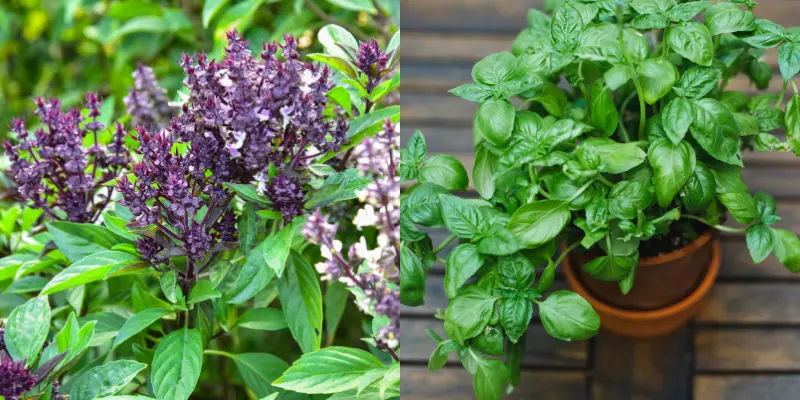Basil should receive six to eight hours of bright sunlight per day for optimal growth.
Table of Contents
Factors To Consider
To ensure optimal growth, basil should receive around 6-8 hours of sunlight each day. However, too much direct midday sun can be harsh on the plant, so it’s advisable to provide some light shade during peak hot hours. Maintaining damp, well-drained soil is also essential for basil’s health.
Optimal Sunlight For Basil
Basil, being a tropical herb, thrives in sunny conditions. It requires a good amount of sunlight to grow and produce healthy foliage and flavorful leaves. Ideally, basil should receive six to eight hours of bright light per day. This ensures that the plant gets enough energy to carry out photosynthesis and produce essential compounds for growth.
Effects Of Too Much Sun
While basil enjoys sunlight, excessive exposure to the intense midday sun can be harmful to the plant. During the peak hours of summer temperatures, the hot sun can cause the leaves to wilt and burn, leading to stress and reduced overall health. If you notice wilting during this time, it may indicate that your basil plant is getting too much sun.

Credit: thehappygardeninglife.com
How To Provide Shade
If your basil plant is suffering from the harsh rays of the sun, it’s important to provide some shade to protect it. Here are a few methods to consider:
By implementing these shade-providing techniques, you can help your basil plant thrive and continue producing aromatic and tasty leaves throughout the summer season.
Tips For Growing Basil
If you want your basil to thrive and produce abundant foliage, there are a few key tips to keep in mind. From sowing and growing basil from scratch to harvesting and pruning techniques, here are some expert tips for growing healthy and flavorful basil plants.
Sowing And Growing Basil From Scratch
Sowing basil from seeds is an easy and cost-effective way to start your basil plants. Begin by selecting high-quality basil seeds from a reputable source. Plant the seeds indoors, about six to eight weeks before the last frost date in your region. Sow the seeds in well-drained soil and gently press them down, ensuring they are covered with a thin layer of soil.
Once you have successfully germinated your basil seeds, provide them with ample sunlight. Basil thrives in full sun, so it is important to place your pots or containers in an area that receives at least six to eight hours of bright light per day. Adequate sunlight is crucial for the growth and development of basil plants.
Harvesting And Pruning Techniques
To encourage bushy growth and prolong the lifespan of your basil plants, it is crucial to harvest and prune them regularly. Start by pinching off the top leaves when the plant reaches a height of approximately six inches. Pinching the top leaves helps to promote lateral growth, resulting in a more compact and bushy basil plant.
When harvesting basil leaves, ensure that you pluck them from the top down, starting with the outer leaves. This technique allows for continued growth and ensures a fresh supply of basil leaves throughout the growing season. Avoid cutting off more than one-third of the plant at a time to prevent stressing the basil and hindering its growth.
Varieties Of Basil To Grow
There are numerous varieties of basil to choose from, each offering unique flavors and aromas. Some popular basil varieties include:
- Sweet Basil: The classic basil variety, known for its sweet and slightly spicy flavor.
- Genovese Basil: A staple in Italian cuisine, prized for its intense fragrance and rich flavor.
- Thai Basil: This basil variety has a distinct licorice flavor and is commonly used in Southeast Asian dishes.
- Lemon Basil: As the name suggests, this basil variety has a subtle lemony scent, adding a refreshing twist to dishes.
Consider growing a variety of basil plants to add diversity to your herb garden and enhance the flavors of your culinary creations.
By following these tips for sowing and growing basil from scratch, mastering the art of harvesting and pruning, and experimenting with different basil varieties, you can enjoy a bountiful supply of fresh and aromatic basil leaves throughout the growing season.

Companion Plants For Basil
Chives
Basil and chives make great companions in the garden. Chives are known for their ability to repel pests such as aphids, mites, and Japanese beetles, which can damage basil plants. Additionally, the strong aroma of chives can help to mask the scent of basil, making it less attractive to pests. Plant chives near your basil to deter pests and promote healthy growth.
Tomato
Basil and tomatoes are a classic combination in both the garden and the kitchen. These plants not only complement each other in flavor but also in the garden. Basil can help to protect tomatoes from pests such as aphids and whiteflies, while tomatoes can provide much-needed shade and protection for basil during the hottest part of the day. Planting basil and tomatoes together can create a mutually beneficial relationship that promotes healthy growth for both plants.
Parsley
Basil and parsley are excellent companion plants due to their similar growth habits and compatible cultural requirements. Parsley can help to deter pests such as carrot flies and aphids, which can be harmful to basil. Additionally, parsley’s dense foliage can provide some shade and protection for basil during the hottest part of the day. Planting basil and parsley together can create a beautiful and functional herb garden.
Marigold
Marigolds are a popular companion plant for basil due to their ability to repel harmful insects such as nematodes, aphids, and whiteflies. These pests can be detrimental to basil plants and can hinder their growth. By planting marigolds near your basil, you can help to protect it from these pests and promote healthy growth. Additionally, marigolds add a pop of color to the garden and can attract beneficial insects such as bees and butterflies.
Dill
Dill is another excellent companion plant for basil. Dill attracts beneficial insects such as ladybugs and lacewings, which can help to control pests like aphids and mites. Additionally, dill’s feathery foliage can provide some shade and protection for basil during the hottest part of the day. Planting basil and dill together can create a visually appealing and environmentally friendly garden.
Oregano
Oregano and basil are natural companions in the garden. Oregano’s strong aroma can help to deter pests such as aphids and spider mites, which can be harmful to basil. Additionally, oregano can provide some shade and protection for basil during the hottest part of the day. Planting basil and oregano together can create a beautiful and aromatic herb garden.
Frequently Asked Questions For How Much Sun Should Basil Get
Can Basil Get Too Much Sun?
Basil prefers moist soil and warm weather. While it loves sun, too much midday sun can be harsh. If your basil wilts during peak summer temperatures, add light shade. Basil needs 6-8 hours of sun daily, except in the South and Southwest where afternoon shade is necessary.
Does Basil Like Full Sun Or Shade?
Basil likes full sun, but it can tolerate some shade, especially in hot and sunny climates. It needs around 6 to 8 hours of sunlight daily for optimal growth. Make sure the soil is moist but not too wet, and well-drained.
What Does Basil Look Like When It Doesn’t Get Enough Sun?
When basil doesn’t get enough sun, it may look wilted and weak. It can benefit from some light shade during peak hours of summer temperatures to prevent wilting. Basil prefers moist soil and needs six to eight hours of bright light per day to thrive.
How Do You Keep Basil Bushy?
To keep basil bushy, make sure it gets 6-8 hours of bright sunlight per day. Avoid hot midday sun and consider adding light shade if it wilts. Basil also needs moist, well-drained soil. To promote bushiness, pinch off the top leaves and stems regularly.
Harvest regularly to encourage new growth.
Conclusion
To ensure the healthy growth of your basil plants, it is important to provide them with the right amount of sunlight. While basil loves warm weather, too much direct sunlight during the peak hours of the day can be harsh.
Aim to give your basil plants around six to eight hours of bright light per day, but consider adding light shade if you notice wilting during hot summer temperatures. Remember to keep the soil moist but not drenched, and ensure it drains well.
By following these guidelines, you can enjoy a thriving basil garden all summer long.


![Terrifying Trend: Why Do Roosters Chase Humans? [2024]](https://plantsandchickens.com/wp-content/uploads/2024/02/why-do-roosters-chase-humans-4.webp)


Leave a Reply